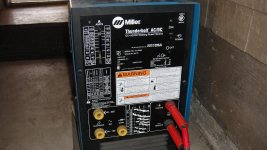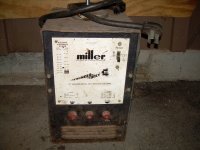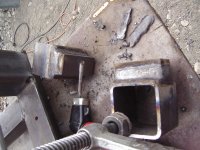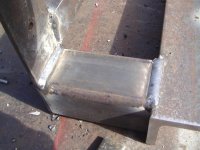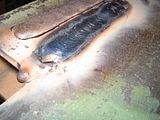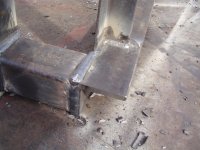JB4310
Super Member
First off let me say, after reading the threads in this forum, I never knew how much I never knew about welding  If I ever knew what I never knew, I'd of never started!
If I ever knew what I never knew, I'd of never started!
Couple of questions,
Just wondering why on my ac/dc machine, max amps on the ac are higher than on the dc?
225 for ac and only 150 for dc, are they equivalent?? or is ac capable of welding heavier/thicker steel?
Also, just recently replaced my ground clamp, I had used a battery jumper cable clamp for all these years til the spring wore out, it had a little insulation on the handles, all the ground clamps I've seen have no insulation on them. What is the reason for no insulation on the ground? I find myself with both cables in my hands sometimes, and some times with no gloves. what's the rule, never hold both at once or never handle cables with no gloves?
What is the general consensus of a miller thunderbolt AC/DC. strictly homeowner/hobbyist or slightly better?
Couple of pics of my buzz boxes, I replaced the ac only with the ac/dc 2 years ago. I have not used ac since. Found that ac machine on the side of the road, in a pile of garbage, cobbled it back to life and it served my needs for 30 years!!!
Thanks JB.
Couple of questions,
Just wondering why on my ac/dc machine, max amps on the ac are higher than on the dc?
225 for ac and only 150 for dc, are they equivalent?? or is ac capable of welding heavier/thicker steel?
Also, just recently replaced my ground clamp, I had used a battery jumper cable clamp for all these years til the spring wore out, it had a little insulation on the handles, all the ground clamps I've seen have no insulation on them. What is the reason for no insulation on the ground? I find myself with both cables in my hands sometimes, and some times with no gloves. what's the rule, never hold both at once or never handle cables with no gloves?
What is the general consensus of a miller thunderbolt AC/DC. strictly homeowner/hobbyist or slightly better?
Couple of pics of my buzz boxes, I replaced the ac only with the ac/dc 2 years ago. I have not used ac since. Found that ac machine on the side of the road, in a pile of garbage, cobbled it back to life and it served my needs for 30 years!!!
Thanks JB.
